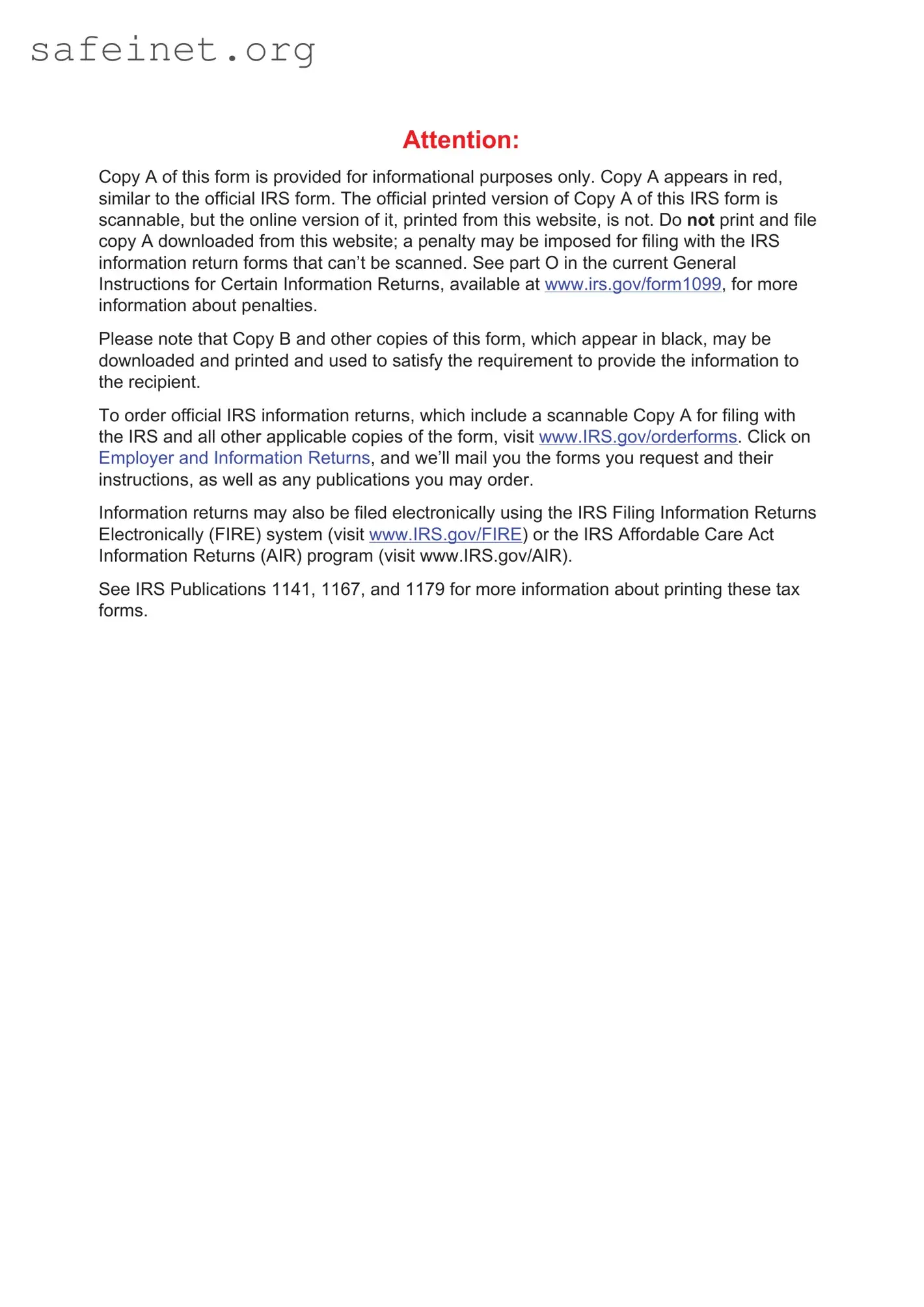What is the IRS 1099-A form?
The IRS 1099-A form, also known as "Acquisition or Abandonment of Secured Property," is a tax document used to report the acquisition of property by lenders or the abandonment of property by borrowers. This form is essential for individuals who have gone through foreclosure or have had property repossessed. It helps taxpayers understand the implications regarding their tax returns.
Who needs to file a 1099-A form?
Lenders are generally required to file a 1099-A form when they acquire secured property from a borrower. This includes banks and other financial institutions that have taken back property due to foreclosure or repossession. Borrowers may also receive this form as it provides crucial information for reporting on their taxes.
What information is included on the 1099-A form?
The form includes details such as the borrower's information, the date of abandonment or acquisition, the fair market value of the property, the outstanding principal balance of the debt, and any other relevant data. This information helps both lenders and borrowers assess their financial situations and report accurately to the IRS.
How does the 1099-A form affect my taxes?
If you receive a 1099-A form, it may indicate that you have gained or lost wealth due to the acquisition or abandonment of property. You may need to report this information on your tax return, as it can affect your taxable income. Reporting the forgiven debt or loss of property accurately can help avoid potential tax liabilities.
What should I do if I receive a 1099-A form?
If you receive a 1099-A form, carefully review the information provided. If you believe any details are incorrect, contact the lender for clarification. Additionally, consult with a tax professional to ensure proper reporting of this information on your tax return. This step can help you navigate any implications related to the abandonment or acquisition of property.
When should I expect to receive a 1099-A form?
Lenders must provide the 1099-A form to borrowers by January 31 of the year following the calendar year in which the property was acquired or abandoned. Keep an eye on your mailbox during this period, especially if you have dealt with foreclosure or property repossession.
Where can I find a copy of the 1099-A form?
You can obtain a copy of the 1099-A form from the IRS website or request one directly from your lender. It's essential to ensure you have the correct form, as it is needed for accurate tax reporting and compliance.



